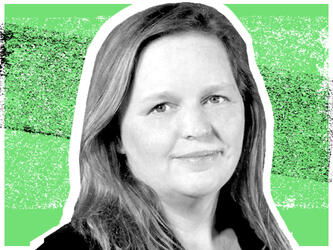Lessons from marketing winners: Using utility to drive change

The Warc Rankings compile the world’s top 100 marketing campaigns across creative, media and effectiveness. Across the top campaigns included in the annual rankings for 2025, several trends are emerging that reflect the direction of travel in marketing.
Today’s consumers are increasingly wary of advertising deluging them across every platform. To cut through unprecedented media fragmentation, it’s more essential than ever that brands embrace creativity and novelty. In this year’s most successful campaigns, brands were unafraid to shake up traditional ways of thinking in the media space.
Innovation is a constant theme in the top work – from tapping into the practical utility of consumer tech, to disrupting their own customer journey, to finding new ways to capture the attention of target audiences. This evolution reflects the desire of brands to move beyond ‘one way’ communications toward active consumer participation in a saturated advertising market.
The Warc Rankings combine the winners’ lists from the advertising industry’s key global and regional awards shows to establish the annual worldwide league tables.
Precise targeting vs broad reach
The Media 100-winning campaign from Nosotras Women Connecting, a Costa Rican charity, pivoted to WhatsApp for precise messaging to its target audience after its broad reach multichannel media campaign failed to get key legislation across the line.
WhatsApp groups are universally used in Costa Rica and are used very differently from other communication platforms in the country. By pivoting toward a ‘social utility’ in WhatsApp, as opposed to a paid advertising platform, Nosotras Women Connecting specifically targeted the politicians with ‘thank you’ WhatsApp messages on their own mobile phones, ultimately winning votes to pass the legislation.
The QR code is king
Brazilian e-commerce platform Mercado Libre was among this year’s top performers in the Warc Rankings, with the campaign ‘Handshake Hunt’ tapping QR code scanners on mobile phones on Black Friday.
Eager shoppers scanned the codes on TV ads for discounts, subverting the traditional role of a broadcast TV ad with gamification to drive e-commerce purchases.
Using a smartphone’s scanning utility in this way – instead of simply a paid TV or mobile ad – sparked interest and excitement for Mercado Libre offers during a very crowded consumer shopping event.
Self-disrupting the customer journey
Cookie brand Oreo has a long history of fun and creative marketing that captures attention in new ways. Oreo dug into consumer insights to better identify opportunities to disrupt its own customer journey, discovering that that 60-70% of its key millennial target audience used mobile devices in physical stores.
Leaning into a classic pairing – cookies with milk – the brand turned milk bar codes into a way for people to redeem offers and buy Oreos via bar code scanning technology on its mobile website. By changing its own path-to-purchase and distinctive assets in this way, Oreo grew sales by 32.1%, trips by 18.4%, and repeat buyers by 25.2%.
Proving practical utility with ‘wow’ factor
This year’s rankings also spotlighted the power of utility as a tool to reach consumers. For example, PetPace, a pet health monitoring company, wanted to showcase the technology of its products and build brand awareness across South America.
The campaign provided real-time earthquake alerts based on data from the brand’;s smart collar, which monitors dogs’ physiological and behavioural data to detect potential earthquakes.
Using advanced AI and sensor technology, the collars pre-empted 18 seismic events in Peru, allowing timely warnings to more than nine million people via mobile notifications, billboards, and radio broadcasts. Critically, the strategy grew PetPace’s brand recognition in South America by 50% within a year.
Anna Hamill is senior editor at Warc Creative

We hope you enjoyed this article.
Research Live is published by MRS.
The Market Research Society (MRS) exists to promote and protect the research sector, showcasing how research delivers impact for businesses and government.
Members of MRS enjoy many benefits including tailoured policy guidance, discounts on training and conferences, and access to member-only content.
For example, there's an archive of winning case studies from over a decade of MRS Awards.
Find out more about the benefits of joining MRS here.












0 Comments